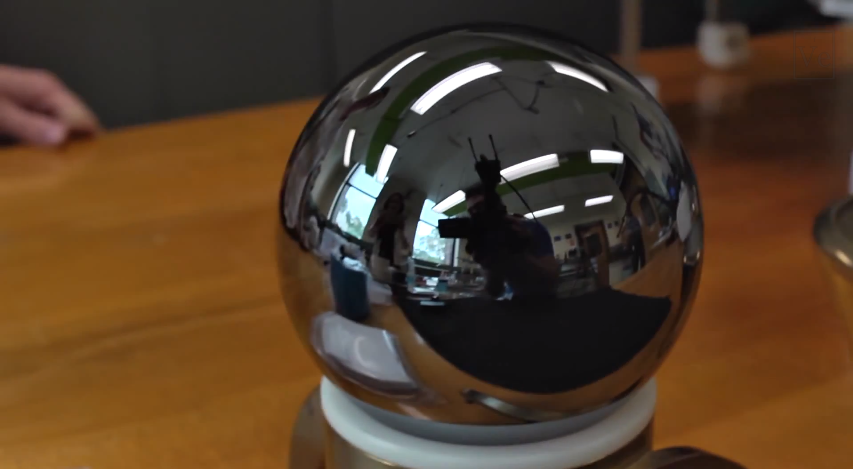A few thoughts up front:
A perfect sphere is normally thought of as a sphere that is completely seamless across its surface. There are no cracks, indentations, valleys or hills. This would create a world that would exist sort of like this:  Sphere made of a single element.
Sphere made of a single element.
Following this idea...
The Earth existing as a perfect sphere would mean some very drastic changes:
Plate Tectonics
Earth is not one single element but a diverse collection of many, possibly infinite materials (at least on the more and more micro level) materials. A macro example of this is the Farallon Plate that is now subducted deep into the earth. This process is essential to everything that exists right now and would exist very differently within a world that had to stay a perfect sphere.
- Protrusions from the surface...
Without some contour, providing friction and anchoring to a surface, all of these items would be in constant motion, sliding around the surface of the planet like a giant ice rink. Different organisms might arise. Beings that existed as a sort of cloud that could envelop the planet rather than be anchored on the planet's surface.
- Internally, assume the Earth is still the same.
Internally it might be, but without some way to move through molten material up through the planet's surface, creating breaks in that surface, how would the process stay the same? Perhaps through a brief quantum fluctuation, where momentarily both the internal surface and the external surface existed and then they switch places?
- Assume that said setup is unaffected by natural processes. I'm guessing...
Plate Tectonics and the very nature of the earth would have to be changed. You could have a planet surface that was made entirely of water and the material beneath would be some sort of hydrophobic material, the water on top forming a membrane all the way around and floating above the actual inner core of the planet.
The Planet in Hypothetical
What we have now is a planet with a molten core, churning away. It is made of a hydrophobic substance that is perhaps in a different state of physical matter than we currently are aware of: A kind of supercooled plasma perhaps?
It has to move to retain some of the levels of complexity that you want to exist as part of this world, but the motion of the surface of the planet retains an unbroken surface equilibrium. Water makes up the majority of the surface of the planet. Maybe with thin veins of other some other concentrated material structures running at perfect level with the surface of the planet.
Beings, intelligent and otherwise
As life progressed on this planet it gathered first above the surface, living in a contiguous atmospheric cloud above the surface of the planet. From here the concentrations of material gave off a mild magnetic field and the planet's weak blue sun gave some cold light. These organisms progressed through Millions of years.
They feed off the brief interplay between the mild magnetic field of the planet and the dim light of the stellar body that sits at the center of the solar system. They have just reached the level where they can communicate to each other, a brilliant yet fading pulse. A single conversation takes them 500 years.

 Sphere made of a single element.
Sphere made of a single element.